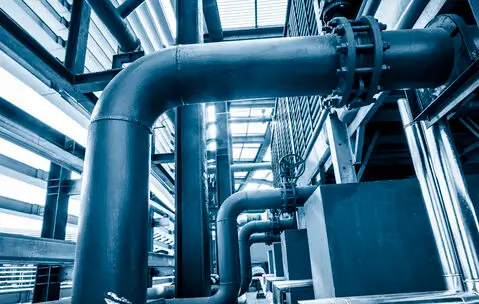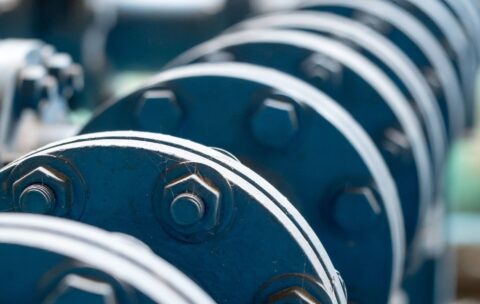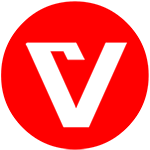About Me
Full Name
ASME
Bio
________
1
Enrolled Courses
1
Active Courses
0
Completed Courses
14
Total Students
8
Total Courses
Courses Taken
Intermediate
B31.3 Process Piping
Apply the ASME B31.3 Code requirements throughout the entire process …
11,980 EGP
B31.3 Process Piping
What you'll learn
Identify the responsibilities of personnel involved in the design, fabrication, assembly, erection, examination, inspection, and testing of process piping
Describe the scope and technical requirements of the ASME B31.3 Code
Apply and implement the quality requirements that are defined in the ASME B31.3 Code
Intermediate
ASME B31.3 and B31.1 Practical Piping Design for Process and Power Applications
Are you qualified as an inspector or a supervisor? As an Engineer, …
11,980 EGP
ASME B31.3 and B31.1 Practical Piping Design for Process and Power Applications
What you'll learn
By participating in this course, you will learn how to successfully:
Identify the responsibilities of personnel involved in the design, fabrication, assembly, erection, examination, inspection, and testing of process and/or power piping
Describe the scope and technical requirements of the ASME B31.3 Code as well as differences in ASME B31.1.
Apply and implement the quality requirements that are defined in the ASME B31.3 and B31.1 Code.
Explain the principal failure modes of piping components and where to look for them
Describe the layout and simplified and formal analysis techniques
Who should attend?
This course is designed for engineers, managers and quality personnel who are involved in the design, manufacturing, fabrication, and examination of process piping that is being built to the requirements of U.S. Codes & Standards.
Engineers entering the piping design and analysis field
Practicing piping engineers requiring background on Code compliance and trends in piping design, analysis, and fabrication
QA/QC personnel
Piping Designers involved in the design, layout, of pressure piping systems.
Intermediate
B31.1 Power Piping
Employ the ASME B31.1 requirements throughout the entire system lifecycle …
11,980 EGP
B31.1 Power Piping
What you'll learn
Identify the difference between “Design by Rule” and “Design by Analysis” codes.
Discover the principal failure modes of piping components and where to look for them.
Recognize the difference between pressure component design and structural design.
Investigate the importance of piping flexibility.
Discuss how to develop stress intensification factors.
Recognize how to qualify nonstandard fittings and joints.
Identify materials selection and limitations, fabrication rules and their bases
Explain welding qualification requirements, inspection, examination, and testing requirements
Identify the Code requirements for power piping maintenance
Intermediate
ASME BPV Code, Section VIII, Division 2: Design & Fabrication of Pressure Vessels
This introductory course describes the use of alternative rules for …
11,980 EGP
ASME BPV Code, Section VIII, Division 2: Design & Fabrication of Pressure Vessels
What you'll learn
Explain how the requirements of Divisions 1 and 2 of Section VIII compare
Explain the theories of failure and design margins of various codes
Identify the general requirements of the new Division 2
Describe design rules and stress analysis methods
Explain fatigue analysis
Identify materials and fabrication requirements
Identify NDE requirements, pressure testing, and pressure relief requirements
Intermediate
Fundamentals of Pumps and Their Selection for Optimum System Performance
Learn the fundamentals, selection, installation, operation, maintenance, and troubleshooting of …
11,890 EGP
Fundamentals of Pumps and Their Selection for Optimum System Performance
What you'll learn
Calculate the pressure loss in a pipeline due to friction for circular and non circular ducts
Determine the pipe diameter that minimizes first plus operating costs of a piping system
Generate a system curve for a pipeline
Identify the testing methods used to obtain a performance map for a centrifugal pump
Employ the system curve to select an efficient centrifugal pump
Explain how to predict when cavitation will occur and identify the necessary steps to avoid it
Explain how to use dimensional analysis to correlate experimental data for a pump
Explain how the specific speed is determined
Apply affinity laws to predict off-design behavior for a pump
Identify types of positive displacement pumps
Examine common methods of measuring flow rate in a pipeline
Identify the types of meters available for flow rate measurement
Generate calibration curves for venturi, orifice, and elbow meters
Describe the different types of valves that are commercially available
Explain how to select the correct valve for a piping system
Identify and avoid problems by selecting the correct valve
Explain how to install, operate and maintain valves
Describe the process of diagnosing and troubleshooting valve problems
Intermediate
Bolted Joints and Gasket Behavior
Understand bolted joint fundamentals and gasketed joint torque factors, bolting …
11,980 EGP
Bolted Joints and Gasket Behavior
What you'll learn
Explain how the bolted joint functions as a mechanical system that relies on the simultaneous interaction of the three primary components to successfully seal the connection
Assess the mechanical stress and strain of a bolt and explain the challenges that one encounters when specifying an optimum bolt load
Evaluate the total state of stress in bolts and how this effects the selection of a given bolt type and grade
Describe the effects of in-service conditions and how they reduce or increase bolt load
Describe the concept of leak tightness as a predictable value of gasket stress and how to use leak tightness as the basis of specifying bolt loads
Identify conditions that create bolt failure
Use ASME PCC-1 Guidelines for compliance to successful sealing of bolted, gasketed connections
Discern how to use either stress or strain to select bolt load
Evaluate the various methods of attaining bolt load.
Intermediate
B31.8 Gas Transmission & Distribution Piping System
Gain an understanding of ASME B31.8 including design, operation, maintenance, …
11,980 EGP
B31.8 Gas Transmission & Distribution Piping System
What you'll learn
Explain the causes and modes of pipeline failure
Describe the considerations for material specifications, pipe manufacturing, and pipe joining
Estimate pipeline stresses from external loading
Explain how to evaluate pipeline defects
Identify pipeline repair techniques
Identify the elements of pipeline integrity
Explain how code requirements address these issues
Explain the differences between B31.8 and US DOT gas pipeline regulations
Intermediate
Design of Bolted Flange Joints
Understand and apply ASME codes and standards for bolted flange …
11,980 EGP
Design of Bolted Flange Joints
What you'll learn
You Will Learn To
Develop an awareness of flange types and the ASME codes and standards applicable for bolted flange joint design
Enhance your knowledge for designing and analyzing bolted flange joints
Explain how the flange design interacts with bolts and gaskets to achieve a leak tight joint
Identify the parameters that can affect flange sealing along with methods to troubleshoot and remediate flange leakage










